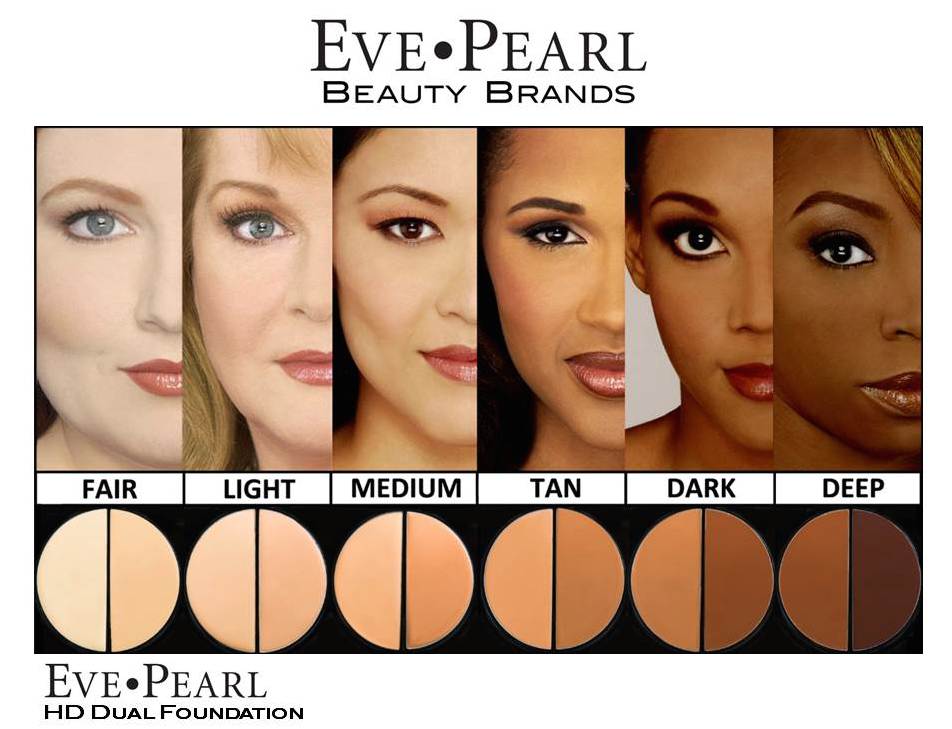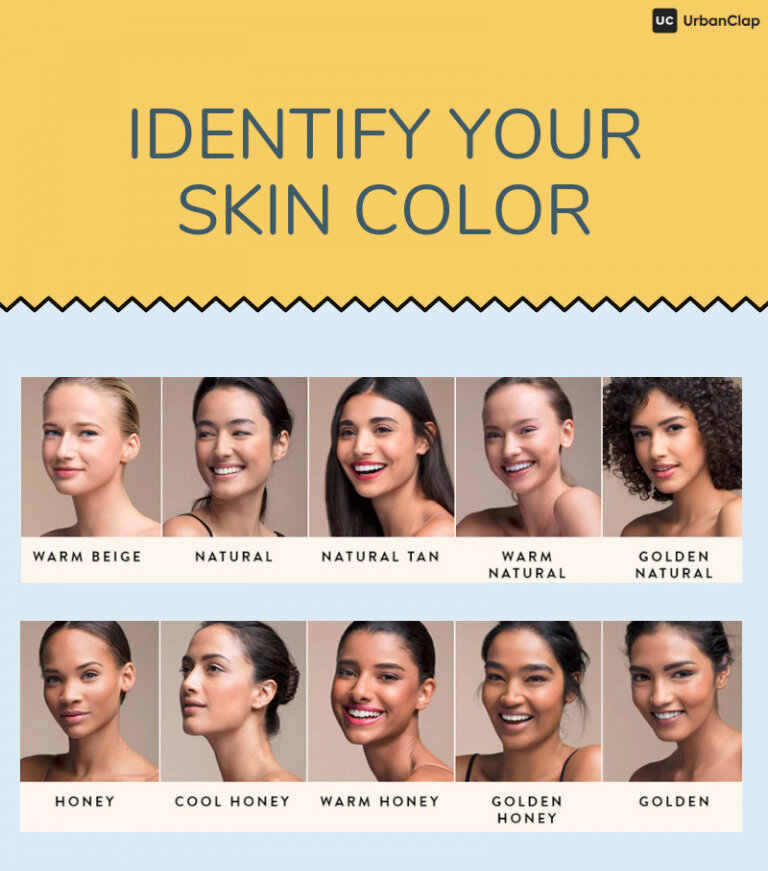Finding the perfect shade of foundation can be a daunting task. With countless options available, it’s easy to feel overwhelmed. But fear not, because choosing the right shade can make a world of difference in the way your makeup looks. Did you know that using the wrong shade of foundation can leave your complexion looking unnatural and mismatched? It’s essential to find a shade that matches your skin tone to achieve a seamless and flawless finish.
When it comes to selecting the right shade of foundation, understanding your skin undertones is crucial. There are three main undertones: warm, cool, and neutral. Warm undertones have hints of yellow, cool undertones lean towards pink or red, while neutral undertones have a balanced mix of both. Determining your undertone will help you narrow down the suitable shade range. Additionally, consider your skin type and the level of coverage you desire. Remember, the goal is to enhance your natural beauty without creating a stark contrast between your face and neck. Take the time to swatch different shades on your jawline to find the perfect match for a flawless and natural-looking complexion.
Finding the right shade of foundation is key for a flawless makeup look. To determine your perfect shade, start by identifying your skin undertone: cool, warm, or neutral. Then, consider your skin color and choose a foundation shade that closely matches it. Try swatching a few shades on your jawline and go for the one that disappears into your skin. Remember, natural lighting is crucial for accurate color matching. If you’re still unsure, consult with a professional makeup artist who can guide you in finding your ideal foundation shade.

What Shade of Foundation Should I Use?
Choosing the right shade of foundation can be challenging. With so many options available, it can be overwhelming to find the perfect match for your skin tone. In this article, we will explore the factors to consider and provide you with valuable information to help you determine the ideal shade of foundation for your skin.
Understanding Your Skin Undertone
When it comes to choosing the right foundation shade, understanding your skin undertone is crucial. Your undertone is the underlying color that affects your overall complexion. There are three main undertones:
- Cool: If you have pink or red undertones, your skin falls into the cool category.
- Warm: If you have golden, peachy, or yellow undertones, your skin is warm-toned.
- Neutral: If your undertones are a mix of cool and warm, you likely have a neutral undertone.
To determine your undertone, look at the veins on your wrist:
| Vein Color | Undertone |
| Blue or Purple | Cool |
| Green | Warm |
| Blue-Green | Neutral |
Understanding your undertone will guide you in selecting a foundation shade that complements your natural skin color.
Matching Your Shade to Your Skin Tone
Once you have determined your undertone, the next step is to find a foundation shade that matches your skin tone. Here are a few tips to help you with this process:
Test Multiple Shades
It’s important to test multiple shades in person before making a purchase. Many stores offer testers or samples that allow you to try the foundation on your skin. This will help you find the shade that blends seamlessly with your complexion.
Natural Lighting is Key
When trying out foundation shades, make sure to step outside and evaluate the color in natural lighting. Indoor lighting can distort the appearance of the shade, so natural light is the best way to ensure an accurate match.
Swatch Testing
Swatch testing involves applying a small amount of foundation to your jawline or neck. The shade that disappears into your skin or blends seamlessly with it is the right match for you.
Choosing the Right Undertone for Different Seasons
It’s important to note that your skin tone may vary slightly throughout the year, depending on factors such as sun exposure and seasonal changes. In summer, you may have a slightly warmer complexion due to sun-kissed skin, while in winter, your skin may appear paler. Consider adjusting your foundation shade accordingly to ensure a seamless match.
The Importance of Undertone Matching
Matching your foundation shade to your undertone is crucial for achieving a natural-looking finish. Using a foundation with the wrong undertone can result in a mismatched appearance, making your complexion look unnatural or uneven. By selecting the right undertone, you can enhance your natural beauty and create a flawless base for your makeup.
Seeking Professional Advice
If you’re still unsure about finding the right foundation shade for your skin, consider seeking professional advice. Makeup artists or beauty consultants can provide personalized recommendations based on your skin undertone and complexion. They have the expertise to guide you in choosing the perfect foundation shade that suits your unique needs.
What Shade of Foundation Should I Use?
Choosing the right shade of foundation is a personal journey. It requires understanding your undertone, testing multiple shades, and considering seasonal variations. By following these tips and seeking professional advice if needed, you can find the ideal foundation shade that enhances your natural beauty and gives you a flawless complexion.
Key Takeaways: What Shade of Foundation Should I Use?
Choosing the right shade of foundation can be tricky, but here are some key takeaways to keep in mind:
- Identify your undertone – whether it’s cool, warm, or neutral – to find the right foundation shade.
- Test the foundation on your jawline or wrist to see if it blends well with your skin tone.
- Consider your skin type and desired coverage level when selecting a foundation shade.
- Take natural lighting into account when choosing a foundation shade to ensure it matches your skin perfectly.
- Don’t be afraid to seek professional help or ask for samples to find your perfect foundation shade.
Frequently Asked Questions
Choosing the right shade of foundation is essential for achieving a flawless makeup look. Here are some common questions and answers to help you find the perfect shade for your skin.
1. How do I determine my skin undertone?
To determine your skin undertone, look at the veins on your wrist. If they appear bluish or purple, you have cool undertones. If they appear greenish, you have warm undertones. If you can’t clearly see a bluish or greenish hue, you likely have neutral undertones. Understanding your undertone will guide you in choosing the right foundation shade.
Another way to determine your undertone is to consider how your skin reacts to the sun. Cool undertones tend to burn easily, warm undertones tan easily, and neutral undertones usually have a combination of both. Keep these factors in mind when selecting a foundation shade.
2. Should I test foundation shades on my face or neck?
It’s best to test foundation shades on your jawline, between your face and neck. This area provides a better match to your overall skin tone. Avoid testing on your hand or wrist, as the skin color may differ from your face and neck.
Apply a few swatches of different shades on your jawline and compare them in natural light. The shade that blends seamlessly with your skin is the most suitable for you.
3. How can I find my shade online without testing it in person?
If you’re unable to test foundation shades in person, you can use online shade-matching tools offered by beauty brands. These tools usually require you to answer a few questions about your skin tone, undertone, and any specific concerns.
Based on your answers, the tool will recommend the most suitable shades for you. However, keep in mind that online shade matching may not be as accurate as testing in person, so it’s always a good idea to consult customer reviews and swatch comparisons before making a purchase.
4. How do I choose the right foundation shade for different seasons?
Your skin tone can change slightly with the seasons, so it’s important to adjust your foundation shade accordingly. In the warmer months when your skin tends to get more sun exposure, you may need a slightly darker shade.
During the colder months when your skin may be paler, opt for a lighter shade. If you find that your skin tone fluctuates throughout the year, consider having two foundation shades – one for summer and one for winter – to ensure a perfect match all year round.
5. Can I mix two foundation shades to get the right match?
Yes, you can mix two foundation shades to customize your perfect match. If none of the available shades match your skin tone perfectly, experiment by blending different shades together.
Start by mixing small amounts of each shade and gradually adjust until you achieve the desired color. This way, you can create a custom shade that perfectly matches your unique undertones and changes in skin color throughout the year.

Choosing the right shade of foundation can be tricky, but with a few tips, you’ll be able to find the perfect match for your skin. Start by determining your undertone, whether it’s cool, warm, or neutral. Next, match your foundation shade to your undertone to create a seamless look. Remember to test the foundation on your jawline or the back of your hand to ensure it blends well with your skin. And don’t forget to consider factors like lighting and natural light when making your final decision.
If you’re unsure about your undertone or finding the right shade, it’s always a good idea to consult with a makeup professional who can guide you in selecting the best foundation for your complexion. They can provide personalized recommendations and help you achieve a natural and flawless finish. By following these steps and seeking expert advice when needed, you’ll be well on your way to finding the perfect shade of foundation that enhances your natural beauty.






Leave A Comment